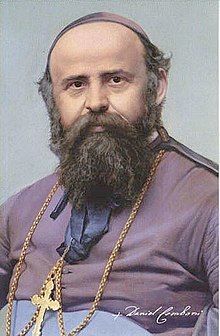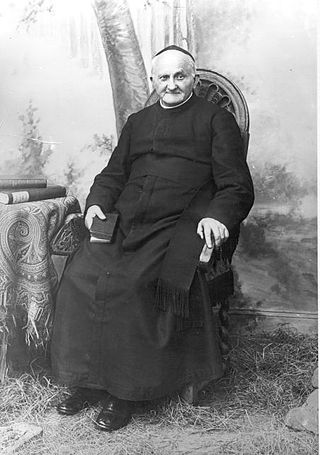
Arnold Janssen, S.V.D., was a German-Dutch Catholic priest and missionary who is venerated as a saint. He founded the Society of the Divine Word, a Catholic missionary religious congregation, also known as the Divine Word Missionaries, as well as two congregations for women. In 1889 he founded in Steyl, Netherlands, the Missionary Sisters Servants of the Holy Spirit and in 1896 at the same place the Holy Spirit Adoration Sisters. He was canonized on 5 October 2003, by Pope John Paul II.
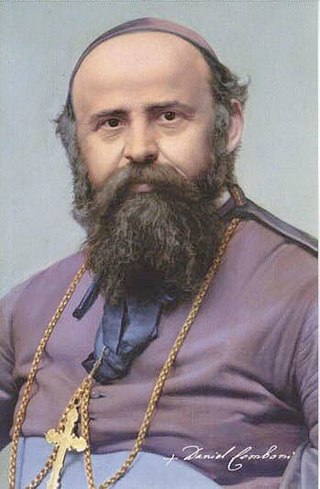
Daniele Comboni was an Italian Catholic bishop who served in the missions in Africa and was the founder of both the Comboni Missionaries of the Heart of Jesus and the Comboni Missionary Sisters. Comboni studied under Nicola Mazza in Verona where he became a multi-linguist and in 1849 vowed to join the missions in the African continent although this did not occur until 1857 when he travelled to Sudan. He continued to travel back and forth from his assignment to his native land in order to found his congregations and attend to other matters, and returned in 1870 for the First Vatican Council in Rome until its premature closing due to conflict.

The Congregation for the Evangelization of Peoples was a congregation of the Roman Curia of the Catholic Church in Rome, responsible for missionary work and related activities. It is also known by its former title, the Sacred Congregation for the Propagation of the Faith, or simply the Propaganda Fide. On 5 June 2022, it was merged with the Pontifical Council for Promoting the New Evangelization into the Dicastery for Evangelization.
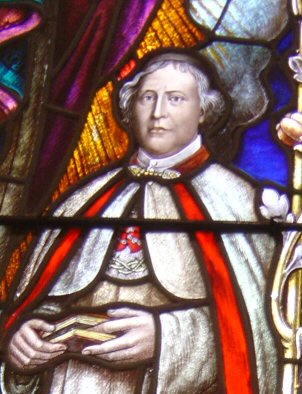
The Congregation of the Sacred Hearts of Jesus and Mary abbreviated SS.CC., is a Roman Catholic clerical religious congregation of Pontifical Right for men priests and brothers. The congregation is also known as the Picpus because their first house was on the Rue de Picpus in Paris, France.

The University of Asmara (UoA) was a public university in Asmara, Eritrea. The nation's first university, it was founded in 1958 by the "Piae Madres Nigritiae". The school was meant to provide for the local population, though its initial enrollment in the 1950s was entirely Italian. Over the course of its history it has been reopened and reorganised following political changes. In 2006 it was closed and reorganized into other institutions such as the Eritrea Institute of Technology.
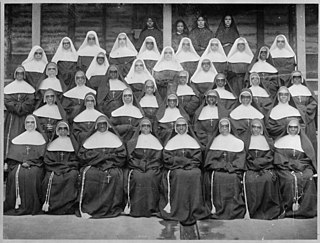
The Sisters of the Holy Family are a Catholic religious order of African-American nuns based in New Orleans, Louisiana. They were founded in 1837 as the Congregation of the Sisters of the Presentation of the Blessed Virgin Mary by Henriette DeLille, adopting the current name in 1842. They were the second Black religious order in the United States, after Mother Mary Lange's Oblate Sisters of Providence.

The Pontifical Urban University, also called the Urbaniana after its names in both Latin and Italian, is a pontifical university under the authority of the Congregation for the Evangelization of Peoples. The university's mission is to train priests, religious brothers and sisters, and lay people for service as missionaries. Its campus is located on the Janiculum Hill in Rome, on extraterritorial property of the Holy See.

The Roman Catholic Archdiocese of Khartoum is the Latin Metropolitan archbishopric with See in national capital Khartoum whose Ecclesiastical province, including the suffragan Obeid, covers Sudan.
The Roman Catholic Diocese of Bangassou is a suffragan diocese in the Central African Republic in the Ecclesiastical province of Bangui. The diocese is dependent on the missionary Dicastery for Evangelization.

Menghesteab Tesfamariam, M.C.C.I. is an Eritrean prelate of the Eritrean Catholic Church who has been the metropolitan archbishop of the Archeparchy of Asmara and head of the Eritrean Catholic Church since 2015. He has been a bishop since 2001.

The Oblates of Jesus the Priest is a Roman Catholic religious congregation of sisters. Founded in Mexico in 1924, it is now represented in Mexico, the United States, Italy, and Ecuador. Their charism is “to love the priesthood and to make it loved,” so the apostolates of the sisters predominantly center on assisting priests and promoting the priesthood. These include, but are not limited to, ministering in seminaries, aiding retired priests, sewing vestments, assisting in rectories, working as secretaries for bishops, and conducting religious education in some parishes. The Oblate sisters are also very musical, emphasizing singing and playing instruments during their liturgies and sometimes writing their own music.

Maria Giuseppa Scandola, MSV, was an Italian member of the Missionary Sisters of Verona, also known as the Comboni Missionary Sisters. She served in what is now South Sudan, where she offered up her life in 1903.
The Apostolic Vicariate of Hosanna is a Catholic pre-diocesan missionary jurisdiction of the Roman Catholic Church in Ethiopia.

The Comboni Missionaries of the Heart of Jesus, also known as the Comboni Missionaries of the Sacred Heart, or the Verona Fathers, and originally called the Sons of the Sacred Heart of Jesus, is a Catholic clerical male religious congregation of pontifical right.
Catarina, sometimes Caterina, Zenab (1848–1921) was a Sudanese Catholic missionary.

Nicola Mazza was an Italian Roman Catholic priest. Mazza was born in and served as a priest in Verona and was dedicated to both the evangelization of Central Africa and equal access to a good education. He served as a teacher for over three decades as well as a chaplain and was known for his dedication to the Christian formation of children. Mazza was also a student and close friend to Saint Gaspare Bertoni and was also close with a range of prominent prelates including Saint Daniele Comboni whom he sent to the missions in Africa.
Luzia Premoli S.M.C, is a Brazilian Roman Catholic nun and missionary, Superior General of the Comboni Missionary Sisters between 2010 and 2016 and the second female appointed in an office of the Roman Curia after Enrica Rosanna.

Romeo Panciroli was an Italian prelate of the Catholic Church who worked in communications until 1984 and then in the diplomatic service of the Holy See.
Alicia Vacas Moro is a Spanish-born nurse and a leader of the Comboni Missionary Sisters in the Middle East and Asia. She served as a nurse in Egypt and in Bethany in the West Bank. During the pandemic she returned to help in Italy. She was awarded the International Women of Courage Award in 2021 on the recommendation of the Holy See for her work.
